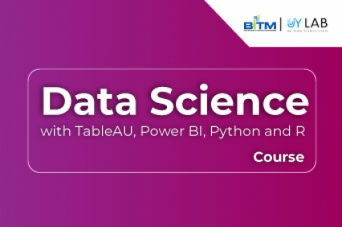- +8809612342486
- [email protected]

Data Science with TableAU, Power BI, Python and R
This Training is jointly organized by BITM & UY LAB.
Training will be held in UY LAB.
Data Science with TableAU, Power BI, Python and R :
| Course Module | Data Science with TableAU, Power BI, Python and R | 30 Hrs |